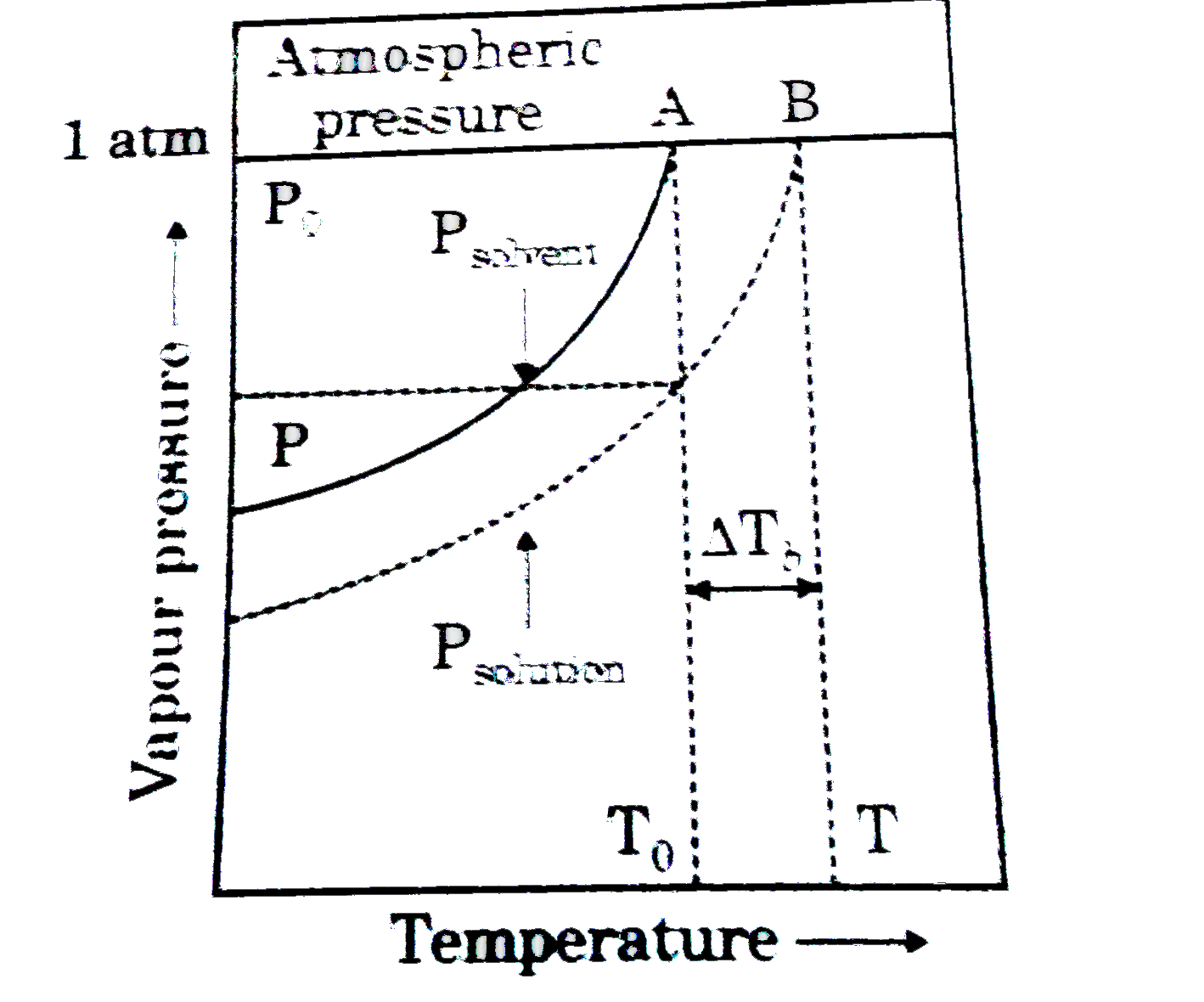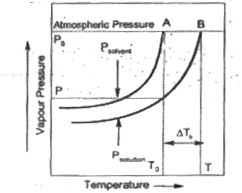When non-volatile solute is added to a pure solvent, the:
V.P. of solution becomes lower than the V.P. of pure solvent
rate of evaporation of solvent is reduced
solute does not affect the rate of condensation
rate of evaporation of solvent = rate of condensation of the solvent at equilibrium
Refer theory (Relative lowering of vapour pressure).
Topper's Solved these Questions
- BOOK - VMC MODULES ENGLISHCHAPTER - THEORY OF SOLUTIONSEXERCISE - JEE Main (Archive)57videos
THEORY OF SOLUTIONS
- BOOK - VMC MODULES ENGLISHCHAPTER - THEORY OF SOLUTIONSEXERCISE - JEE Advanced (Archive)31videos
THEORY OF SOLUTIONS
- BOOK - VMC MODULES ENGLISHCHAPTER - THEORY OF SOLUTIONSEXERCISE - LEVEL 175videos
THEORY OF SOLUTIONS
- BOOK - VMC MODULES ENGLISHCHAPTER - THE SOLID STATEEXERCISE - EXERCISE-J10videos
THE SOLID STATE
- BOOK - VMC MODULES ENGLISHCHAPTER - THERMOCHEMISTRYEXERCISE - JEE ADVANCED (ARCHIVE)31videos
THERMOCHEMISTRY
Similar Questions
Why is freezing point depressed when a non-volatile solute is added to a solvent ?
View SolutionFigure explains elevation in boiling point when a non-volatile solute is added to a solvent. Variation of vapour pressure with temperaure and elevation in boiling point is marked.

Elevation in b.p of an aqueous urea solution is 0.52∘(Kb=0.52∘mol−1kg). Hence, mole fraction of urea in this solution is:View SolutionFor a non-volatile solute
View SolutionThe vapour pressure of pure liquid solvent A is 0.80 atm. When a non-volatile substance B is added to the solvent, its vapour pressure drops to 0.60 atm, the mole fraction of component B in the solution is
View SolutionAssertion (A) When methyl alcohol is added to water, boiling point of water increases.
Reason (R ) When a volatile solute is added to a volatile solvent evevation in boiling point is observed.View SolutionThe vapour pressure of a solvent decreased by 10mm of Hg when a non-volatile solute was added to the solvent. The mole fraction of solute is 0.2, what would be the mole fraction of solvent if the decrease in vapour pressure is 20mm of Hg.
View SolutionConsider following figure and answer the questions at the end of it. Figure explains elevation in boiling point when a non-volatile solute is added to a solvent.

Variation of vapour pressure with temperature and showing elevation in boiling point.
Given that ΔTb is the elevation in boiling point of the solvent in a solution of molality m then Ltm→0(ΔTbm) is equal toView SolutionThe vapour pressure (VP) of a dilute solution of non-volatile solute is P and the VP of a pure solvent is P∘. The lowering of the VP is
View SolutionV.P. of solvent in pure state is 600 mm Hg, when a non-volatile solute is added to it vapour pressure of solution becomes 594 mm Hg, then xB will be
View SolutionIf a non-volatile solute is dissolved in a volatile solvent relative lowering of vapour pressure is equal to
View Solution

